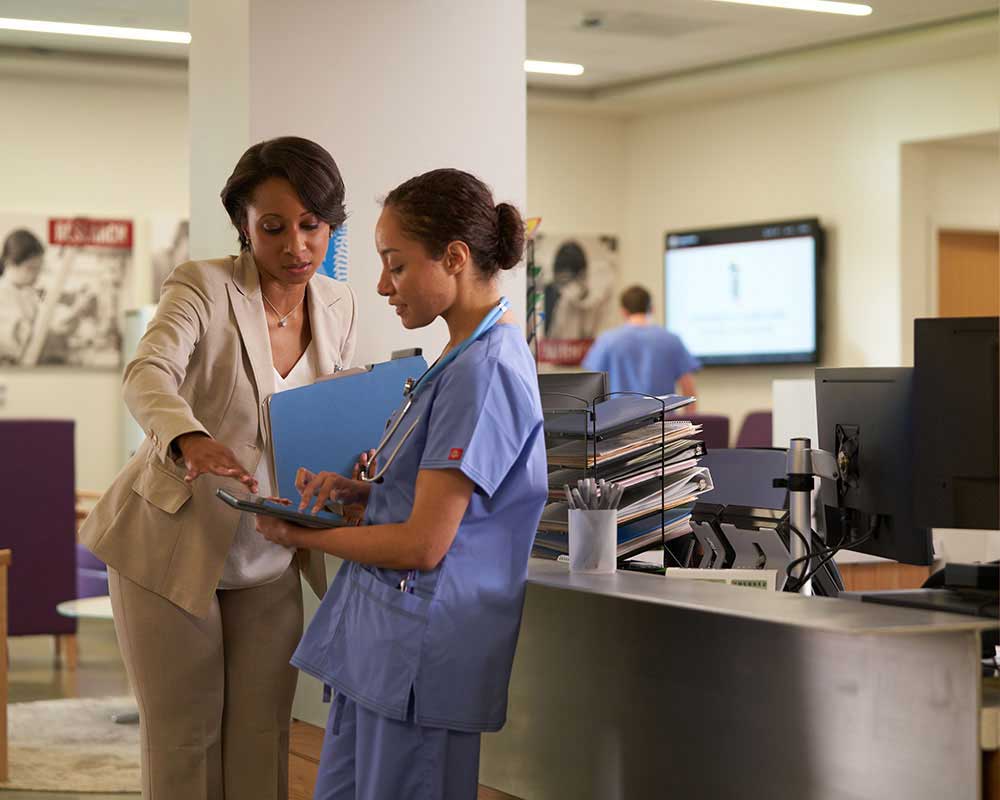The Future of Medical Administration: Fads and Developments to See
Wiki Article
Finest Practices in Medical Management for Improving Performance and Lowering Prices
In the ever-evolving landscape of health care, the quest of finest practices in medical management is extremely important for enhancing efficiency and curbing expenses. By integrating innovative innovations such as digital health and wellness records and telemedicine, doctor can streamline operations and enhance individual treatment. Modern technology alone is not a remedy; maximizing source allocation and cultivating joint interaction amongst care groups are just as critical. As companies strive to balance high quality and cost, what approaches should be prioritized to achieve these double objectives? The response to these inquiries hold the secret to a much more sustainable health care system.Leveraging Advanced Technology
In today's rapidly progressing healthcare landscape, leveraging advanced modern technology is no more optional but vital for effective medical administration. The integration of digital solutions right into healthcare systems has actually changed the way centers run, enhancing processes and enhancing individual treatment. Electronic Health And Wellness Records (EHRs) are essential, providing detailed individual information that can be accessed instantaneously by accredited workers, therefore decreasing redundancy and lessening errors. By centralizing client information, EHRs eliminate the requirement for troublesome documentation and assist in seamless interaction amongst doctor.Telemedicine is one more technological improvement that has actually changed individual interaction. It supplies convenience for both individuals and healthcare specialists by making it possible for remote consultations, which can minimize the need for in-person gos to and enhance consultation scheduling. Furthermore, telehealth systems can extend healthcare access to country or underserved locations, bridging voids in treatment shipment.
In addition, making use of Artificial Intelligence (AI) and maker understanding is coming to be progressively prevalent in predictive analytics, permitting very early detection of prospective health and wellness concerns and more informed decision-making. These innovations, when incorporated successfully, can boost diagnostic precision and customize patient treatment strategies, inevitably leading to enhanced medical care end results and operational efficiency.
Optimizing Resource Allotment
By purposefully managing sources such as workers, devices, and finances, medical care facilities can considerably boost their operational performance, boost client end results, and decrease unneeded expenditures. The initial action in optimizing resource appropriation involves performing a comprehensive evaluation of present properties and determining areas where resources may be underutilized or exhausted.Prioritizing resource allotment based on patient demands and solution needs is important. Applying versatile staffing versions can also enhance labor sources by changing personnel appropriation in action to varying patient quantities.
Economic resources need to be diligently kept an eye on and assigned with strategic foresight to support both short-term operational needs and long-term institutional objectives. This includes investing in training programs that enhance personnel proficiencies and taking on energy-efficient techniques that decrease functional expenses (medical administration). Eventually, an enhanced source allowance approach cultivates a sustainable healthcare setting that is receptive, efficient, and financially prudent
Streamlining Process Procedures
When health care centers objective to boost operational performance, enhancing workflow procedures ends up being a critical focus. Effective workflows lessen redundancy, get rid of unnecessary steps, and improve control amongst medical care specialists. This approach not just speeds up service delivery yet also boosts the quality of person treatment.
Following, innovation integration plays a significant role in improving click for more workflows. Carrying out electronic health records (EHRs) and digital doctor order access (CPOE) systems decreases documents, lessens human mistake, and makes sure information comes to all appropriate personnel. Additionally, leveraging telemedicine platforms can improve client examinations and follow-ups, reducing the strain on physical facilities.

Ultimately, structured process bring about cost decreases and boosted person contentment, promoting a more lasting health care setting.
Enhancing Information Monitoring
Building upon structured process, maximizing information management ends up being a crucial component ahead of time healthcare management. Reliable data administration systems are essential for keeping accurate patient documents, enhancing decision-making, and guaranteeing conformity with regulatory criteria. By applying robust data administration services, healthcare centers can enhance the quality of person care while all at once reducing operational prices.One key element of improving data monitoring is the assimilation of sophisticated digital health and wellness document (EHR) systems. These systems facilitate the smooth exchange of individual information throughout different departments, decreasing duplication of tests and decreasing errors. A properly designed EHR system sustains information analytics, enabling doctor to identify trends and make educated decisions pertaining to individual care.
Additionally, safeguarding client information is extremely important. Taking on extensive cybersecurity measures, including security and routine audits, guarantees the integrity and discretion of delicate details. This not only safeguards individuals but also maintains the institution's online reputation.
Spending in team training is an additional crucial element. Enlightening healthcare specialists on data management methods improves their ability to successfully utilize modern technology, causing boosted person results. To conclude, enhancing information administration with sophisticated technology and extensive training is essential for accomplishing performance and price decrease in clinical administration.
Fostering Collaborative Interaction
A crucial component in progressing clinical management is promoting joint interaction among health care experts. Efficient communication is extremely important blog for ensuring seamless individual care, enhancing treatment end results, and decreasing mistakes. By motivating open dialogue and control throughout multidisciplinary groups, healthcare companies can improve their functional effectiveness and reduce unnecessary costs.Central to this approach is the assimilation of interaction modern technologies such as electronic health and wellness records (EHRs) and safe and secure messaging systems, which help with the fast exchange of crucial client info. These tools make it possible for health care suppliers to gain access to and share data in genuine time, ensuring that all staff member are educated and lined up in their decision-making processes. Moreover, routine group conferences and interdisciplinary rounds can even more advertise view it a society of collaboration and liability.
Training programs concentrated on enhancing interaction skills are also important. Inevitably, promoting collaborative communication leads to enhanced medical care distribution and expense financial savings.

Final Thought
Including innovative technology, such as electronic health and wellness documents and telemedicine, alongside enhanced resource allocation and streamlined operations processes, is crucial for improving efficiency in clinical management. Efficient data monitoring and promoting collaborative communication among medical care teams are critical for decreasing redundancies and enhancing care top quality. By focusing on precautionary care and taking part in top quality renovation campaigns, health care companies can attain substantial cost savings and improved individual outcomes, therefore ensuring lasting medical care distribution in an increasingly complex environment.Report this wiki page